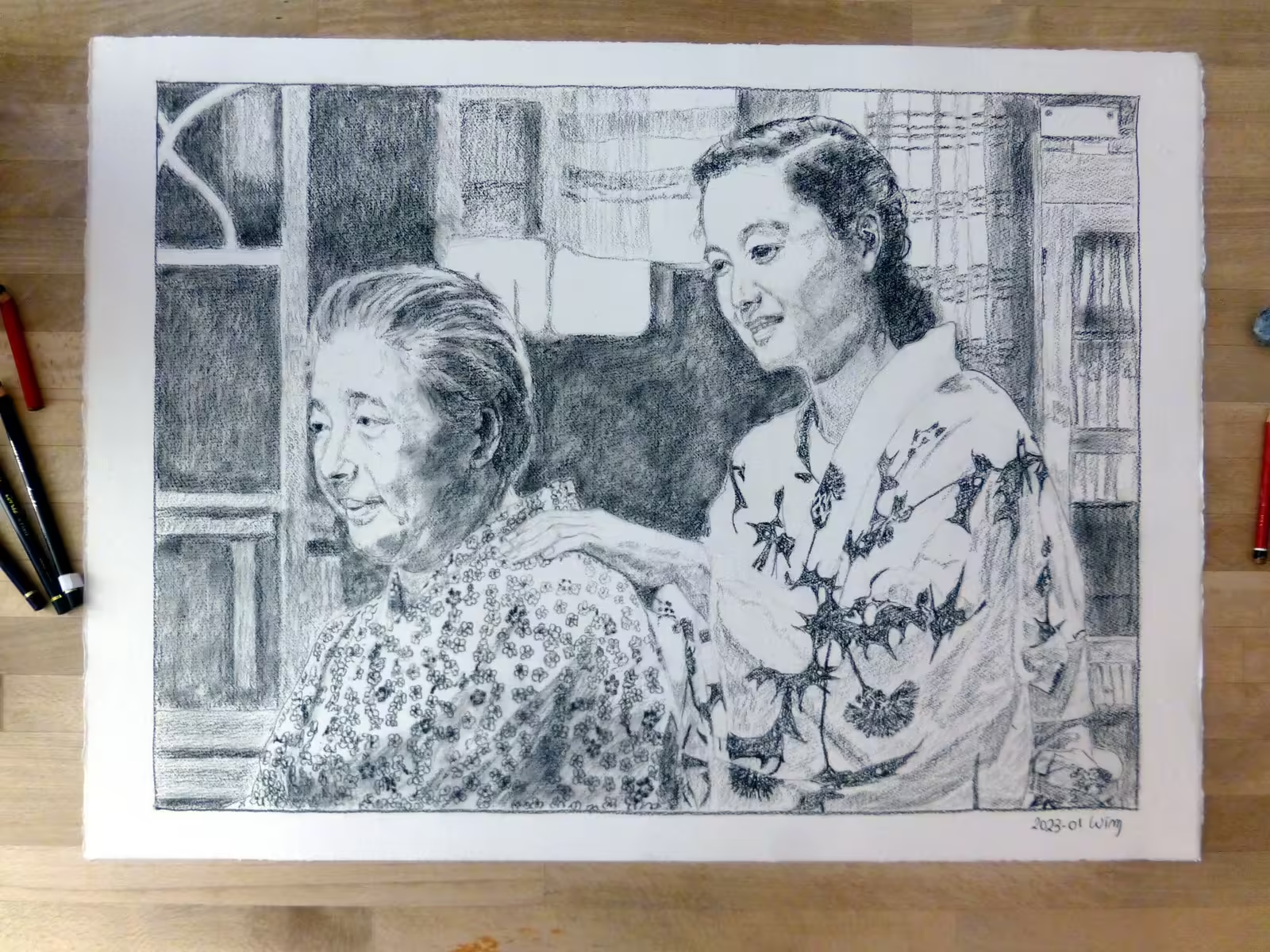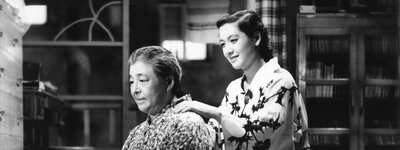I wrote about the Japanese movie Tokyo Story (tōkyō monogatari, 東京物語) and a poster I drew in an earlier post. It is a black-and-white movie from 1953 directed by Yasujirō Ozu about an elderly couple who travel to Tokyo to visit their grown-up children. It’s moving and poetic family story, slow-paced and without much overt drama. I very much like the cinematography, with long static shots of very carefully composed frames.
One of my favourite scenes in the movie is a scene in the apartment of the widowed daughter-in-law, Noriko, where the mother, Tomi, bonds with Noriko. The scene is when they’re about to go to sleep.
Besides the articles linked in my earlier post, the 1982 article by Keiko McDonald “Ozu’s Tokyo Story: Simple Means for Complex Ends” is one of the best analyses of the movie I’ve read. From that article, here is the description of the preamble to the scene:
The scene opens in a typical Ozu manner with a cut from the empty corridor to the inside of the apartment. The shot of the corridor is accompanied by the bong of a clock somewhere, Ozu’s favorite metaphor, which establishes the temporal setting for the dramatic action to follow. It is midnight.
Because there are very few indications of clock time in Tokyo Story, the clock chiming midnight is significant, even though the sound in the movie is really faint. In his article on the importance of time in Tokyo Story, Tetsuya Kumamoto explains that the length of the shot in the empty corridor is significantly longer than similar shots in the movie (more than 10 seconds, whereas usually it is about 7-8 seconds), and the only reason for this is precisely to provide enough time for the 12 bongs of the clock. At the same time that Tomi is quietly talking with Noriko, as shown in the preceding scene, Shūkichi is getting drunk with his old acquaintances. We get an indication of the time there as well, as he barmaid urges them to go home “because it’s already midnight”.
Keiko McDonalds commentary on the scene following the empty corridor shot:
Two quilt beds have already been made, and Noriko is rubbing Tomi’s shoulder. To Japanese audiences this familiar scene is the very index of domestic harmony illuminating the young’s caring for the aged.
And on the following scene:
After Noriko puts the quilt over her, Tomi hesitantly says that, as her mother-in-law, she feels badly that Noriko remains unmarried now that eight years have passed since her husband’s death. Noriko smilingly responds that she does not want to remarry, not because she is loyal to her late husband, but because she is more comfortable living alone. We must read between the lines of this conversation: there, we find a genuine mutual compassion as these two women articulate a kind of resignation in face of the merciless progression of time.
The movie then cuts back to now closed bar, to complete the symmetry. I think the scene is pivotal in the movie, because it leads to Noriko re-evaluating her life.
The drawing
In the movie, Tomi is played by Chieko Higashiyama and Noriko by Setsuko Hara. I wanted to create a double portrait of Tomi and Noriko, and I stayed very close to the original shot, apart from cropping it to get both faces in an optimal position.
I used my preferred rough watercolour paper (Fabriano Artistico, 300 gsm, NOT), about 50 cm x 70 cm. I set up the drawing in ordinary pencil and worked it in Conté pencil (from HB to 3B). I don’t sharpen the Conté pencils to a point. I also used kneaded putty and a piece of soft rag for blending.

The banner is a crop of the still on which the drawing is based.
